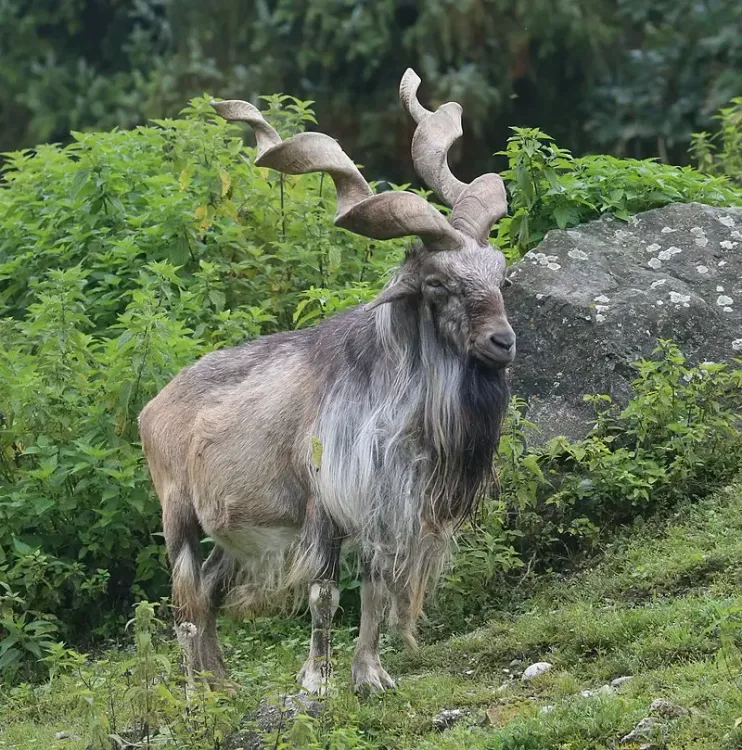Rare Markhor Wild Goat Spotted in Baramulla, J&K

Srinagar, Dec 7 (NationPress) A significant wild goat species, the Markhor, was spotted on Saturday in the Baramulla district of Jammu & Kashmir. Wildlife Protection Department officials have commenced actions to capture and move the rare creature.
The Markhor (Capra falconeri) is a large wild goat species indigenous to South and Central Asia, primarily found in Pakistan, the Karakoram mountain range, parts of Afghanistan, and the Himalayas. Since 2015, it has been classified as “near threatened” on the IUCN red list.
This morning, villagers in Noorkha of the Boniyar area in Uri tehsil of Baramulla district encountered the wild goat near a waterfall.
Upon discovery, the villagers swiftly informed the local police station, prompting a response team from the Wildlife Protection Department to capture and relocate the rare animal.
According to the villagers, the Markhor is not typically found in this region, suggesting that it has likely crossed the Line of Control (LoC) from Pakistan into Baramulla district.
Recognized as the national animal of Pakistan, the Markhor is often referred to as the screw-horned goat. The name ‘Markhor’ derives from Pashto and classical Persian, meaning “snake-eater”.
This term relates to an ancient belief that the Markhor hunts and consumes snakes. The regional myth is thought to stem from the snake-like horns of the male Markhor goat.
Additionally, folklore suggests that the Markhor kills and eats serpents, and while chewing its cud, a foam-like substance emerges from its mouth, falling to the ground and drying. This substance is sought after by locals, who believe it can help extract poison from snakebites.
The United Nations General Assembly has designated May 24 as the International Day of the Markhor.
Adapted to mountainous environments, Markhor can be found at altitudes ranging from 2,000 to 11,800 feet.
These animals inhabit shrub forests predominantly made up of oaks, pines, and junipers. They are primarily diurnal, meaning they are most active during early morning and late afternoon.
The mating season occurs in winter when males engage in combat by lunging, locking horns, and attempting to unbalance each other.
The gestation period lasts 135 to 170 days, typically resulting in one or two offspring, though occasionally three may be born.
Markhors are social and live in herds, commonly numbering around nine, which consist of adult females and their young. Adult males tend to be solitary.
In terms of population structure, adult females and fawns represent the majority, with adult females making up 32% and kids 31%. Adult males constitute 19% of the population.
The alarm calls of Markhor resemble the bleating of domestic goats. During summer, males remain in the forest, while females generally ascend to the highest rocky ridges.
In spring, females tend to stay closer to cliffs in areas with increased rock coverage to protect their young, while males inhabit higher altitudes with better access to vegetation for foraging, improving their physical condition.









